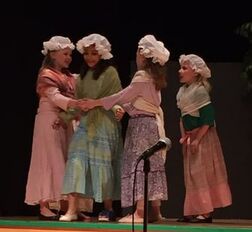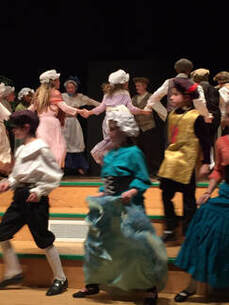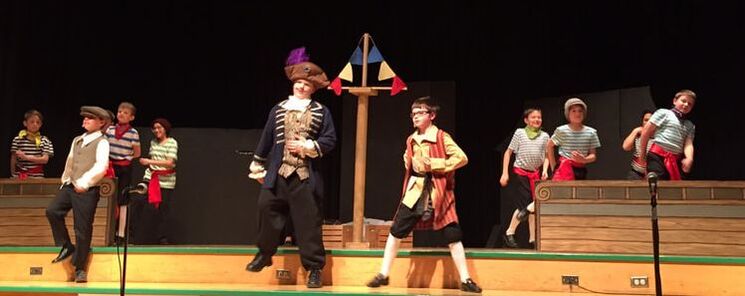 Ring around the rosie...
Ring around the rosie... As an Opener for "The Adventures of Dick Whittington," I wanted to include the entire cast in singing authentic Nursery Rhymes of the Elizabethan period. The children are drawn out onto the stage by the Narrators who introduce them. They come on in four small groups each singing a separate Nursery rhyme. Group 1 dances on singing "Here We Go 'Round the Mulberry Bush." They sing and do the actions twice through. Group 2 enters a few bars later singing and dancing to "Do You Know the Muffin Man." Then a few bars later, Group 3 enters singing and dancing to "London Bridge is Falling Down." Finally, the last group of boys comes on singing "Adam Had Seven Sons." Each group sings their song through twice, and then sits down, leaving Group 4 singing alone to finish.

The children in the cast are having fun working out the timing of this number. It is a lot of movement for the audience to keep track of, but it goes by so quickly I hope they find it energetic and delightful. The kids think it is pure FUN! They are having a great time. That's what I am going for!

 RSS Feed
RSS Feed